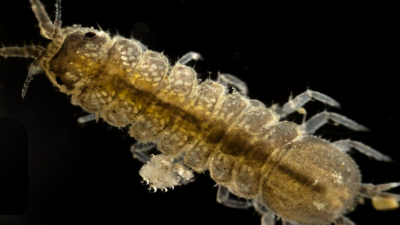In the event of a future catastrophe, it is often said that cockroaches will be among the last forms of life remaining on Earth. However, there is another, more mysterious creature living in the depths that may achieve the same fate. A group of isopods, the size of a football, has roamed the ocean floor like gigantic "rolly-pollies" for 200 to 300 million years, even surviving the dinosaur extinction event. One of the largest living species today, Bathynomus giganteus, can be found at depths exceeding 2500 meters (8200 feet). It was first caught off the Gulf of Mexico in 1879, and it turns out that there may be two species wrapped in one.
A recent analysis of the giant isopods known to live in the deep sea found subtle but significant differences in DNA and morphology (shape and structure). One specimen found in 2017, for example, had a slimmer body compared to other B. giganteus samples, despite being initially classified as that species. The peculiar specimen was found off the Yucatán Peninsula at a depth between 600 and 800 meters, where B. giganteus has been previously located. Its total length was slightly shorter, measuring 26 cm (10 inches), and its antennae were relatively long.
While further data is needed to confirm the precise taxonomic classification of the specimen, researchers suspect it represents a separate new species of Bathynomus, named B. yucatanensis. This new species may have been overlooked until now because the number of spines on its tail matches those found in B. giganteus. Until now, it was believed that this was the main distinguishing feature between the species. Researchers also mentioned that other samples from the South China Sea were misclassified as B. kensleyi, while molecular and phylogenetic analyses showed they are actually B. jamesi.
The authors of the analysis wrote: "It is increasingly evident that Bathynomus species may be very similar in overall appearance, and there is a long history of misidentifying species in the genus." Scientists have classified around 20 species of living organisms belonging to the genus Bathynomus. While these aquatic animals may resemble gigantic woodlice, they are closely related to crabs, shrimp, and lobsters. However, compared to their relatives, we know very little about giant isopods. What we do know suggests they are well-equipped to handle major extinction events, occasionally being able to live without food for years—this may be essential in the depths, where nutrients are scarce and competition is fierce.
In 2019, when researchers threw a crocodile carcass into the Gulf of Mexico, it took one day for a legion of giant Bathynomus to devour the meal. While the crocodile may seem out of place in the ocean, it is common for its carcass to drift into the Gulf of Mexico via rivers or storms. The new research paper concluded that "B. giganteus is indeed the closest species to B. yucatanensis. This suggests that the two species likely share a common ancestor. Additionally, there may also be another undiscovered species of Bathynomus spp. in the Equatorial western Atlantic." The study was published in the journal Natural History.




